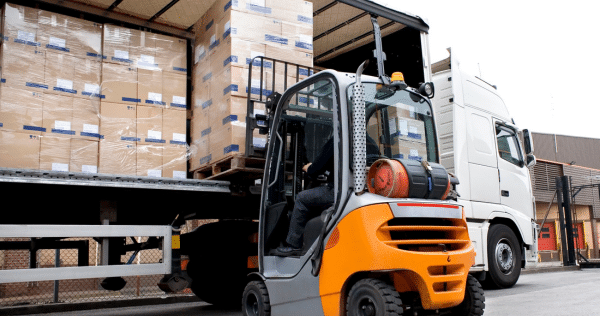A delivery area surcharge (DAS) is an added fee used to compensate carriers for shipping to remote or hard-to-reach locations. They will vary based on factors like how far away the address is, the accessibility of the location, the shipping method used, and the type of DAS category the location falls into.
When you’re shipping to remote locations, it’s hard to avoid delivery area surcharges. However, it’s possible to manage and even reduce these extra shipping costs to help improve your bottom line. This article explains what delivery area surcharges are, why they exist, and what you can do about them.
Key Takeaways
-
A Delivery Area Surcharge (DAS) is an extra fee imposed by carriers for deliveries to remote or challenging locations to compensate for additional carrier costs.
-
There are three main types of DAS: Standard, Extended, and Remote Area Surcharges, each accounting for different geographical delivery challenges.
-
To reduce DAS, businesses can negotiate rates with carriers, utilize regional carriers, and optimize shipping routes for greater efficiency and cost savings.
What Is A Delivery Area Surcharge?
A delivery area surcharge (DAS) is an extra fee charged by carriers that applies to deliveries made to certain remote or hard-to-reach locations. These surcharges are intended to compensate for the extra expenses incurred, such as additional time, fuel, and labor required to reach these areas.
For businesses, DAS can significantly increase shipping costs, impacting profit margins and potentially discouraging customer purchases. As a result, understanding and managing these surcharges is crucial for maintaining a healthy bottom line.
Types of Delivery Area Surcharges
Delivery area surcharges come in multiple forms, each targeting different types of challenging locations. The three primary types include:
-
Standard Delivery Area Surcharge: Standard DAS fees are the most common type of charge. They’re commonly used by major carriers like UPS, FedEx, and DHL for shipments to specific ZIP codes within the contiguous United States, which are well-defined and predictable.
-
Extended Delivery Area Surcharge: Extended DAS fees apply to remote or less populated regions that require carriers to go out of their way to reach the end customer. These areas are specified by carriers based on what they determine to be ‘extended’ based on their service area.
-
Remote Delivery Area Surcharge: Remote DAS fees apply to the most difficult deliveries, like to rural areas in Alaska and Hawaii, that require significant resources to complete. They may require specialized transportation methods or incur additional costs to access the buyer’s delivery address, making a remote area surcharge the most expensive but least common delivery area surcharge.
Less-specialized delivery classifications can save your business a lot on shipping surcharges. Addresses may be classified differently based on the carrier, so comparing carriers and their costs may be the difference between a standard or extended delivery area surcharge.
How Do Carriers Calculate A Delivery Area Surcharge?
Carriers calculate delivery area surcharges based on a variety of factors, including the logistical challenges of reaching certain ZIP codes and the package they’re delivering.
When calculating your delivery area surcharge, carriers consider:
-
Distance from distribution centers
-
Accessibility of the address and roads leading to it
-
Type of transportation required
-
Special handling required
-
Package dimensions and measurements
Knowing these factors helps you predict and manage DAS more effectively, keeping shipping expenses under control. In some cases, carriers will also post these fees for you to reference or provide an online DAS calculator so you know what to expect.
When Does A Delivery Area Surcharge Apply?
Delivery area surcharges apply in various scenarios, depending on the service type and whether the delivery is residential or commercial. They are commonly applied to both deliveries and pickups that fall outside a carrier’s defined standard shipping area, like rural regions or islands. Additionally, security checks or restricted access roads requiring special handling can lead to extra surcharges.
Specific ZIP codes identified by carriers as extended regions may also incur extended delivery area surcharges. These areas are typically more challenging to service, leading to higher operational costs and, therefore, additional shipping fees.
When a shipment destination falls within a surcharge area, the carrier’s system identifies it and applies the corresponding surcharge fee.
How to Reduce Delivery Area Surcharges
Reducing delivery area surcharges is essential for protecting your bottom line, especially if you frequently ship to affected areas. With the right approach and tools, you can minimize these additional fees and optimize your shipping expenses.
Here’s how you can reduce shipping fees associated with DAS.
Negotiating Rates with Carriers
Negotiating carrier contracts allows you to minimize the added surcharge costs by strategically discussing your shipping volume and delivery needs with shipping carriers.
If you send a large number of packages to certain regions, you may unlock lower surcharges per delivery. The same is true for high-volume shippers with strong and long-lasting carrier relationships that provide carriers with a lot of business, encouraging them to work with you further. Alternatively, you might establish an exclusive carrier relationship as an incentive for them to provide cost-effective delivery to distant delivery areas.
At the same time, it pays to shop around and compare quotes from multiple shipping companies before sacrificing in other ways for better rates.
Using Regional Carriers
Regional carriers specialize in certain areas, often providing tailored services that national carriers may not offer. Using regional carriers can result in faster delivery times for local shipments due to their knowledge of specific areas.
In regions where delivery area surcharges are high, regional carriers may provide more cost-effective solutions compared to national carriers.
Optimizing Shipments and Shipping Routes
Consolidating orders and optimizing shipping routes can significantly decrease delivery costs and minimize the impact of delivery area surcharges.
Combining multiple orders into a single shipment helps your business reduce the number of deliveries and the associated costs. Additionally, planning the most efficient paths for deliveries reduces travel distances and fuel consumption, making your operations more efficient and cost-effective at once.
The Role of 3PLs in Managing Delivery Area Surcharges
Third-party logistics providers (3PLs) like Zero Down play a crucial role in managing and reducing delivery area surcharges. They can:
-
Leverage high-volume relationships with carriers to obtain shipping discounts
-
Assist with rate shopping and carrier negotiations to find the most cost-effective shipping options
-
Monitor and alert you when costs change
-
Audit your logistics network using a Transportation Management System (TMS) to identify cost-effective improvements
-
Optimize shipping routes and package optimization to reduce shipping fees
With expert help and resources, you can reduce your DAS fees and overall shipping fees at once, improving your bottom line and margins.
Expertly Navigate Delivery Area Surcharge Costs to Reduce Shipping Spend
Understanding and managing delivery area surcharges is essential for maintaining profitability and customer satisfaction. By recognizing the DAS classifications and how their shipping companies calculate their costs, your business can better prepare for these additional fees.
You can take steps to reduce delivery area surcharge fees by implementing strategies such as negotiating rates with carriers, using regional carriers, optimizing shipping routes, and leveraging the expertise and tools of 3PLs to manage your shipping expenses more effectively.
If delivery area surcharges are eating into your profit margins, contact us today to learn how we can reduce your shipping costs and optimize your supply chain.
Frequently Asked Questions
What is a delivery area surcharge?
A delivery area surcharge is an extra fee charged by carriers for delivering to remote or hard-to-reach locations, compensating for additional operational expenses.
How can businesses reduce delivery area surcharges?
Businesses can effectively reduce delivery area surcharges by negotiating rates with carriers, utilizing regional carriers, and optimizing shipping routes to decrease travel distances and fuel consumption. Third-party logistics providers can help with all of these strategies and more.
When do delivery area surcharges apply?
Delivery area surcharges apply when transporting items to locations outside a carrier’s standard shipping zone, such as remote areas, islands, or regions that need special handling. Therefore, if your delivery address falls into these categories, expect to incur additional fees.
What tools can help estimate delivery area surcharges?
Carriers such as USPS, FedEx, and UPS provide online calculators that allow businesses to estimate delivery area surcharges by inputting package details and destination addresses.
How do 3PLs help in managing delivery area surcharges?
3PLs effectively manage delivery area surcharges by leveraging their relationships with carriers to secure discounts and optimize shipping practices, ultimately helping businesses reduce costs. Their data analytics capabilities further enhance efficiency in shipping operations.
Brad McBride, CEO and Founder of Zero Down Supply Chain Solutions is a dynamic leader with over 30 years of experience in the supply chain sector. His journey began at Consolidated Freightways in 1988, where he mastered freight logistics and pricing. His career led him to Eagle Global Logistics, diving into international freight forwarding and leading high-volume shipping projects.
Read More




